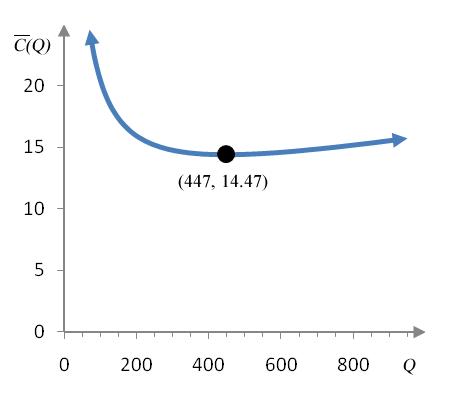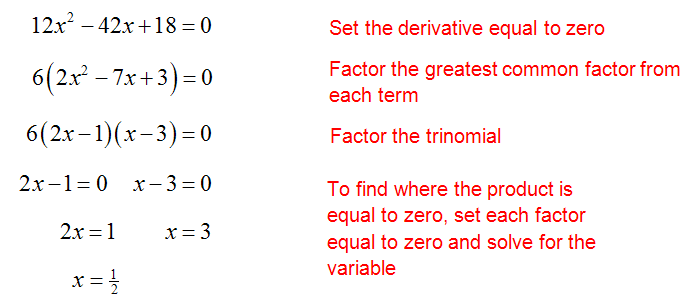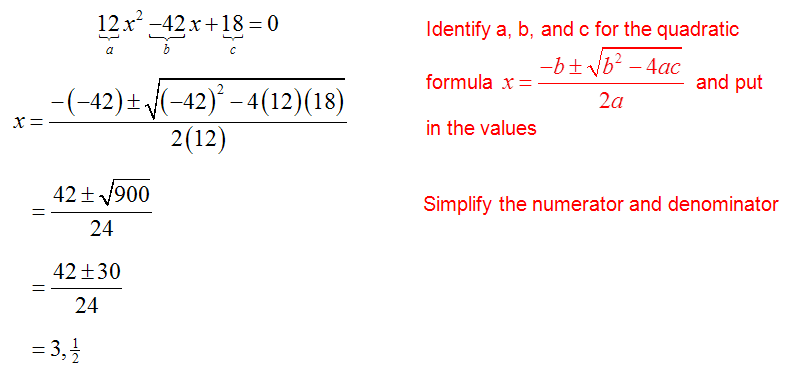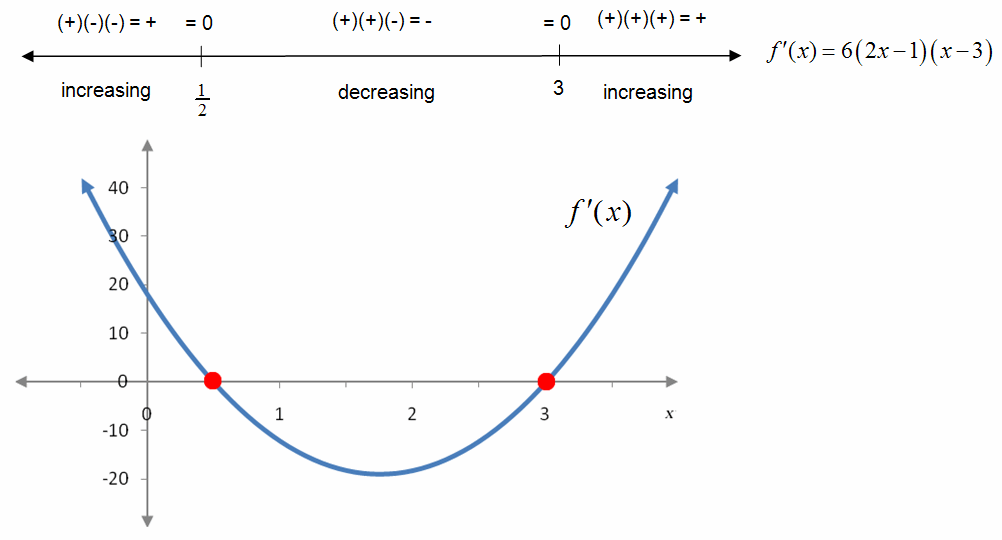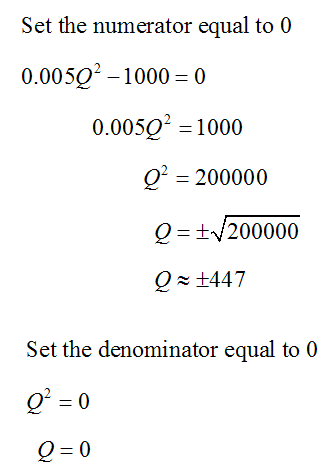How do you find the relative extrema of a function?
The strategy for tracking the sign of the derivative is useful for more than determining where a function is increasing or decreasing. It is also useful for locating the relative extrema of a function. At a relative extrema, a function changes from increasing to decreasing or decreasing to increasing. The number lines in the previous question allow us to see these changes by observing changes in the sign of the derivative of a function.
When the derivative of a function changes from positive to negative, we know the function changes from increasing to decreasing. As long as the function is defined at the critical value where the change occurs, the critical point must be a relative maximum. If the derivative of a function changes from negative to positive, we know the function changes from decreasing to increasing. In this case, the critical point is a relative minimum as long as the function is defined there. If the derivative does not change sign at a critical value, there is no relative extrema at the corresponding critical point.
The First Derivative Test summarizes these observations and helps us to locate relative extrema on a function.
First Derivative Test
Let f be a non-constant function that is defined at a critical value x = c.
If f ′ changes from positive to negative at x = c, then a relative maximum occurs at the critical point .
If f ′ changes from negative to positive at x = c, then a relative minimum occurs at the critical point .
If f ′ does not change sign at x = c, then there is no relative extrema at the corresponding critical point.
Example 6 Find the Relative Extrema of a Function
Find the location of the relative extrema of the function
Use Sum / Difference Rule and the Product with a Constant Rule.
Solution The first derivative test requires us to construct a number line for the derivative so that we can identify where the graph is increasing and decreasing. Using the rules for derivatives, the first derivative of the function f (x) is
So the derivative is
We need to use this derivative to find the critical values. Set the derivative equal to zero to find those values.
In general, critical values may also come from x values where the derivative is undefined. Since f ′(x) is a polynomial, it is defined everywhere so the derivative is defined everywhere.
Although this derivative could be factored to find the critical values, most quadratic derivatives are not factorable. In this case, the quadratic equation yielding the critical values can be solved using the quadratic formula. This strategy would yield the same critical values as factoring:
To find the critical values with more complicated derivatives, we may need to solve the equation 12x2 – 48x + 18 = 0 using a graph. The solution to the equation can also be found by locating the x intercepts on the derivative.
Like factoring or the quadratic formula, the critical values are located at x = 1⁄2 and x = 3. All three strategies yield the same critical values. Keep in mind that a graph will give approximate values while factoring or the quadratic formula yield exact values.
If the derivative is not factorable, linear, or quadratic, another method will need to be used to determine where the derivative is equal to zero. Even though a graph of the derivative only gives an estimate of the critical values, it may be the only way to find the critical values if the derivative is complicated.
With the critical values in hand, label them on a number line so that we are able to apply the first derivative test.
If we select a test point in each interval and determine the sign of each factor, we can complete the number line and track the sign of the derivative.
When a continuous function changes from increasing to decreasing, we have a relative maximum at the critical value. When a continuous function changes from decreasing to increasing, we have a relative minimum at the critical value. In this case, the relative maximum is located at x = 1⁄2 and the relative minimum is located at x = 3.
To find the ordered pairs for the relative extrema, we need to substitute the critical values into the original function to find the corresponding y values:
The relative maximum is located at (1⁄2, 37⁄4) and the relative minimum is located at (3, -22).
Example 7 Find the Relative Maximum
Find the location of the relative maximum of the function

Put these expressions into the Quotient Rule:
To make it easier to find the critical values, simplify the derivative.
Now we can find the critical values by determining where this fraction is equal to zero or undefined.
Any fraction is equal to zero where the numerator is equal to zero. In this case, this is where 1 – x = 0 or x = 1. Fractions are undefined where the denominator is equal to zero. The denominator for this fraction is ex and is always positive so there are no x values where the fraction is undefined.
To apply the first derivative test, label a number line with this critical value and test the first derivative on either side of the critical value:
Since this function is continuous and the derivative changes from increasing to decreasing at x = 1, the critical point is a relative maximum. The y value for the relative maximum comes from the function g(x) and is
The ordered pair for the relative maximum is (1, 1⁄e).
Example 8 Find the Minimum Average Cost
The total daily cost to produce Q units of a product is given by the function
The average cost function C(Q) is found by dividing the total daily cost function C(Q) by the quantity Q.
a. Find the average cost function C(Q).
Solution The average cost function is defined by
Substitute the total daily cost function into the numerator of this fraction to yield
b. Find the quantity that yields the minimum average cost.
Solution The minimum average cost is found by locating the relative minimum of the average cost function. To use the first derivative test to find this relative minimum, we need to take the derivative of C(Q) using the Quotient Rule for Derivatives. The numerator, denominator and their derivatives are
The derivative of the average cost function is
Since we need to use the derivative to find the critical values, we simplify the derivative as much as possible:
Any fraction is equal to zero when the numerator is equal to zero and undefined where the denominator is equal to zero.
Since quantities produced must be positive, only Q ≈ 447 is a reasonable critical value for this function.
The number line for this function only includes positive quantities. Testing on either side of the critical numbers yields the behavior of C′.
Since the function decreases on the left side of the critical value and increases on the right side of the critical value, the quantity at approximately 447 units is a relative minimum.
The minimum average cost is obtained from
Since the total daily cost is in dollars and we are dividing by the number of units to get the average cost, the units on the average cost are dollars per unit. This means that a production level of about 447 units gives the lowest average cost of 14.47 dollars per unit.
